This isn’t an easy time for manufacturers. Supply-chain disruptions, regulation pressures (ESG, CSRD), payment delays, climate risk, and increasing buyer expectations – challenges are everywhere, whether you have a small manufacture or an international company with global outreach.
Cutting costs and increasing margins is the ultimate goal of every company, but manufacturing firms face even greater difficulties in the current market landscape. On one side, the challenges mentioned above; on the other, consumption slowdown in many niches creates stagnation. Just look at automotive: demand remains weak, impacting factory utilization and financial performance, while manufacturing quits rate reached 1.6% in September 2024, signaling uncertainty across the sector.
As a result, management teams find themselves caught between a rock and a hard place: cost cuts from above, while customers have increasingly demanding requirements that call for innovation. Manufacturing companies need greater stability and predictability, independence from supply chain disruptions. They want to sell more frequently and retain customers longer, especially if they don’t have their own branded stores or online shops for direct customers and sell only B2B.
B2B e-commerce platforms need to include features that help both sellers and buyers cut costs, improve sales, and reduce churn by directly addressing these challenges.
B2B ecommerce for manufacturers: how to align business and B2B customer needs?
Business customers want to order more efficiently, completely eliminate ordering errors, have certainty about delivery times, and know emissions in the supply chain. Manufacturing companies want to keep the customer they once acquired against all odds, since it costs them much more than it does in B2C, and the process often takes months. On top of that, every lost client represents a significant loss for digital sales, due to the specifics of sales. But they also want to spend, risk, and waste as little time as little as possible.
These different needs can be combined in one solution that supports both online sales and customer service teams. What’s more – it’s worth doing, if only to avoid juggling between platforms and seal data flow. Costs will undoubtedly drop, especially in the long run, and competitive advantage in the form of better customer loyalty can determine survival. Proper inventory management combined with marketing automation tools allows better response to changing customer expectations and customer behavior.
The features we present in this article are increasingly common in B2B ecommerce. And although this sector is more resistant to innovation than B2C, it’s worth implementing them – especially at this critical moment when competitors are spending so cautiously. This is when you can win a customer for years by building an online store that actually removes friction from every interaction.
Which sales channels in manufacturing require online and which do not?
The structure of sales in manufacturing is complex — from traditional contracts and distributor networks to modern e-commerce platforms. In many cases, being online is not mandatory, and offline channels still dominate. However, digitalization is increasingly becoming a competitive advantage, especially where processes can be automated or streamlined.
To be or not to be online? Sales channels vs. online dependence in b2b ecommerce
| Sales Channel | Requires Online? | Benefits of Online |
|---|---|---|
| 1. Direct Sales (B2B/B2C) | ❌ No | Better lead tracking with CRM, wider reach via digital catalogs and video demos. |
| 2. Distributors / Wholesalers | ❌ No | Faster reordering, automated inventory updates, and improved distributor management. |
| 3. Retail Partnerships | ❌ No | Streamlined transactions through EDI, easier supply chain coordination. |
| 4. E-commerce Platforms | ✅ Yes | Access to global consumers, 24/7 availability, lower entry cost than retail stores. |
| 5. OEM / Private Label | ❌ No | Easier sourcing via B2B portals, faster negotiation and visibility for potential partners. |
| 6. Export & International Distribution | ❌ No | Simplified documentation, access to new markets, digital matchmaking with agents. |
| 7. Government & Institutional Contracts | ⚠️ Increasingly Yes | Compliance with e-procurement rules, quicker tender discovery, transparent bidding. |
| 8. Trade Shows, Expos | ❌ No | Online marketing boosts visibility, digital lead capture enables follow-up. |
| 9. Franchise / Licensing | ❌ No | Online application portals make scaling easier, central brand management tools support consistency. |
| 10. Direct-to-Contract Manufacturing | ❌ No | Online RFQ/RFP platforms speed up sourcing, ensure better transparency and competition. |
| 11. Online B2B Platforms | ✅ Yes | Global exposure, simplified discovery by buyers, low-cost entry into new regions. |
| 12. Hybrid & Omnichannel | ✅ Yes | Combines reach of offline with convenience of online, supports customer self-service. |
As it is not, many manufacturers remain at the minimum and stick to offline channels. Yet here lies the potential for competitive advantage. Implementing a few well-thought-out features can secure customers for years — and prevent churn in the future, when others begin adopting them on a large scale.
To get the most value, it helps to think about online features as a layered roadmap: start with client-side tools that bring quick wins, then strengthen company-side operations, and finally move into advanced differentiators. Below is a structured view split into client-side optimization and company-side optimization, each with features arranged in a progressive path.
Client-side optimization (buyer experience)
Phase 1 – Quick wins
Before implementing innovative features, let’s go back to basics. Many of these functionalities are becoming a standard in a manufacturing business, but many companies still lack it, making a room for you to stand out.
Customer self-service portal
Channels: Direct Sales, Distributors, Hybrid.
Can you imagine a modern company waiting hours for basic information about order status? In an era of instant access to information, B2B clients still have to call or email sales representatives to check their order status or download an invoice. This frustration builds with every minute of waiting.
Failing to address this problem translates into eroding client relationships and increased operational costs. Sales teams become overwhelmed with routine inquiries that consume time that could be dedicated to higher-value activities. Meanwhile, clients begin looking for suppliers offering greater autonomy in order management.
A customer self-service portal radically changes this dynamic. It provides 24/7 access to order information, invoices, and reordering capabilities. Clients can independently track their transactions, download documents, and plan future purchases without needing to contact a sales representative.
To maximize the effect of this functionality, integration with ERP systems and ensuring an intuitive user interface is crucial. Additional analytical modules allow clients to better plan their purchases, resulting in larger and more predictable orders.
E-commerce storefront (B2B/B2C)
Channels: E-commerce, Hybrid.
Why do smaller companies have limited access to industrial products? Traditional sales channels in the manufacturing industry often focus on large clients, leaving SME segments without adequate support. These smaller entities, despite their growth potential, encounter entry barriers in the form of minimum order values or lack of dedicated sales representatives.
The consequences of this approach are far-reaching. Manufacturers lose opportunities to expand into new markets and client segments, while smaller companies must rely on intermediaries, which increases costs and extends supply chains. As a result, the entire ecommerce strategy loses flexibility and growth potential.
An ecommerce platform for B2B and B2C opens global access to products, enabling frictionless ordering regardless of client size. A digital storefront allows for serving thousands of clients simultaneously, offering personalized pricing, product catalogs, and payment terms tailored to different segments.
Maximizing the effect requires implementing advanced personalization features, integration with logistics systems, and mobile optimization. Using analytical tools to monitor customer behavior and optimize purchasing paths is also crucial.
All these elements were taken care of in Miquido’s project for a leading Polish joinery company, covering desktop and mobile access for better comfort of customers and
Self-service quoting & quick reordering
Channels: Direct sales, distributors, hybrid.
Based on the statistics (or everyday conversations at any major distributor’s office), 21-day delivery delays seem to be the new normal. Foreign input delivery delays increased by ~21 days between 2018–2024, causing output loss of 7.3% and cost increases. Under current market conditions, fast procurement processes become critical, minimizing the impact of supply chain disruptions.
When you pair this market landscape with traditional quoting and reordering processes that are time-consuming and error-prone by nature, issues seem unavoidable. Clients must wait for sales responses, often repeating the same specifications for similar orders. In an environment where each day of delay can mean production loss, such inefficiency becomes unacceptable.
Self-service quoting functionality revolutionizes procurement cycles through instant quotes, saved BOM/templates, and “Buy Again” functions. Clients can independently configure products, receive real-time pricing, and duplicate previous orders with a single click.
For maximum effect, the system should be integrated with a manufacturing smart product configurator, dynamic pricing engine, and order template management tools. Implementation of bulk ordering functions and automated reordering schedules further increases value for high-frequency ordering clients.
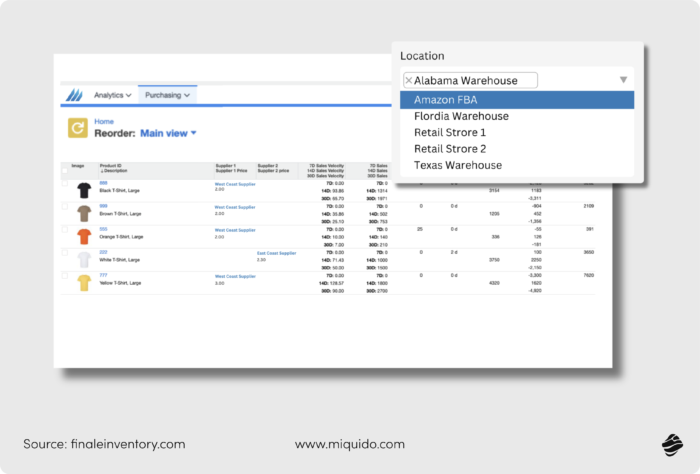
Embedded trade credit & modern B2B payments
How do payment delays affect the stability of entire supply chains? The data is alarming: 55% of all B2B invoiced sales in the U.S. are overdue, with ~9% resulting in bad debt. Additionally, 3 out of 4 SMEs experience delays in receiving payments, creating a domino effect throughout the entire B2B ecosystem.
These payment delays not only damage individual companies’ cash flow but also increase risk in international transactions, where traditional payment methods are slow and costly. Cross-border payments often take days, while currency rates can change significantly, adding another layer of uncertainty.
Digital sales channels equipped with embedded trade credit and modern B2B payment solutions, such as business BNPL (Buy Now, Pay Later), flexible net terms, and multi-currency payments, fundamentally transform this landscape. Faster settlements improve client cash flow, while integrated credit solutions enable larger orders without immediate budget burden.
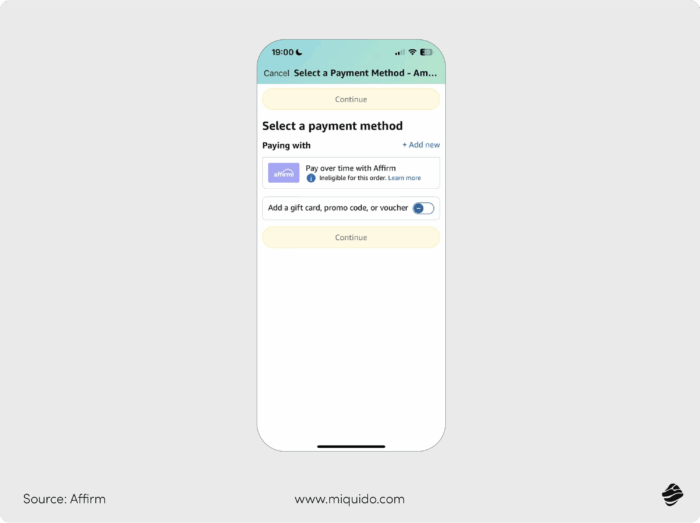
Billie, Klarna’s B2B solution, demonstrates the potential of embedded financial services. Business clients can pay on flexible terms while suppliers receive payment immediately, eliminating credit risk and improving financial flow predictability. You too can integrate such solution in your platform, strenghtening customer relationships with flexible payment options while securing your interest.
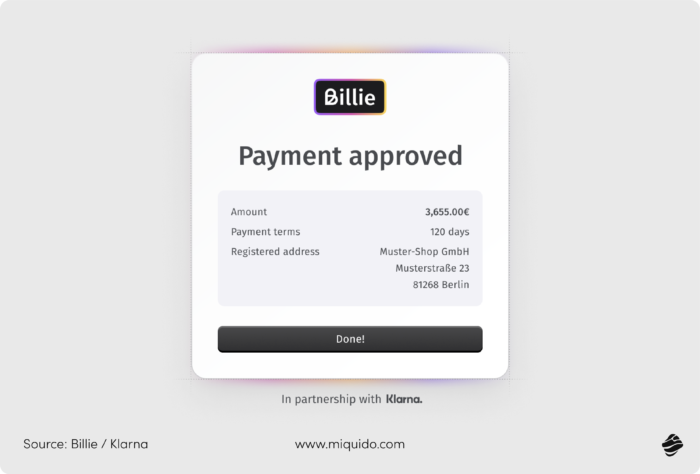
Maximizing the effect of this functionality requires partnerships with fintech solution providers, implementation of advanced risk assessment tools, and integration with client financial systems. Multi-currency support and automated reconciliation further increase value for internationally operating companies. An experienced software partner can check all these boxes through a complex integration with your custom platform.
Phase 2 – Strengthening value
You got the basics? Great – now it s time for the features that will fortify your relationship with the customer, improving the buying process experience on its various stages.
Digital product catalog + AI configurator
Channels: Direct Sales, OEM/Private Label, Export
Wouldn’t you want buyers to feel as confident choosing your products as they do shopping on direct to consumer platforms?
The challenge here is complexity: bills of materials are not easy to navigate, and many prospective customers lack the engineering expertise to configure products correctly. Without advanced search capabilities and real-time guidance, orders stall, sales models become clogged with manual checks, and ecommerce sites lose momentum.
The risk is clear—when decisions take too long or errors creep in, you don’t just slow down digital sales, you lose customer retention and leave the door wide open to competitors. The answer may be supporting your digital product catalog with an AI configurator, or even replacing the first with the second in the case of just-in-time production model.
Our researcher Dominika Będkowska analyzed leading systems and concluded that the most efficient B2B configurators include:
- automated pricing
- integration with inventory systems
- 3D and AR visualization
- order personalization.
A digital catalog with self service capabilities, powered by AI, transforms uncertainty into clarity, building trust and loyalty from the very first click. The costs, the volumes, the terms are clear from scratch, and 3d/ar visualization is your client’s additional shield against costly errors.
Personalized pricing & contract management (Front-end)
Channels: Direct Sales, Retail Partnerships, Hybrid
The real danger for the manufacturing industry is treating every client the same. When account-specific conditions aren’t visible up front, high-volume buyers feel undervalued, while smaller clients see no reason to engage long-term. The outcome? Erosion of customer retention, loss of prospective customers to more adaptive competitors, and stagnation across digital sales channels.
Personalized, AI-driven experiences might be an answer. They have already become the golden standard in direct to consumer ecommerce sites, and B2B is next. And while in retail they mainly oscillate around recommendations, content, and interfaces, in manufacturing they may mean adjusting UI components to the needs of the particular company – based on its size, sector, income and customer status.
By embedding pricing logic and contract visibility in the front-end, your ecommerce strategy actively nurtures loyalty and aligns with evolving customer behavior. All while securing your interest – you can also personalize based on risk or profitability index.
Real-time inventory visibility & landed cost calculators
Channels: Export, International Distribution, Online B2B Platforms
Few things frustrate buyers more than surprises, and yet the challenge for manufacturers remains stubborn: unpredictable supply, tariff shocks, long lead times, and currency swings that distort landed cost.
According to Economist Impact, supply-chain disruptions wipe out 6–10% of annual revenues. Imagine a medium-sized manufacturing company with revenues of $90 million per year; that’s $5.4 to 9 million lost annually. With that money, a firm could invest in an entire new production line, thousands of marketing automation tools licenses, or even a customer service team expansion that directly fuels growth.
Isn’t that a better use of funds than plugging revenue leaks caused by opacity? By integrating transparent stock levels and landed cost calculators, manufacturers build a competitive advantage by turning hidden risks into predictable costs. These tools amplify self service capabilities, empower direct to consumer extensions, and reassure both new and existing buyers that your ecommerce sites are built for certainty.
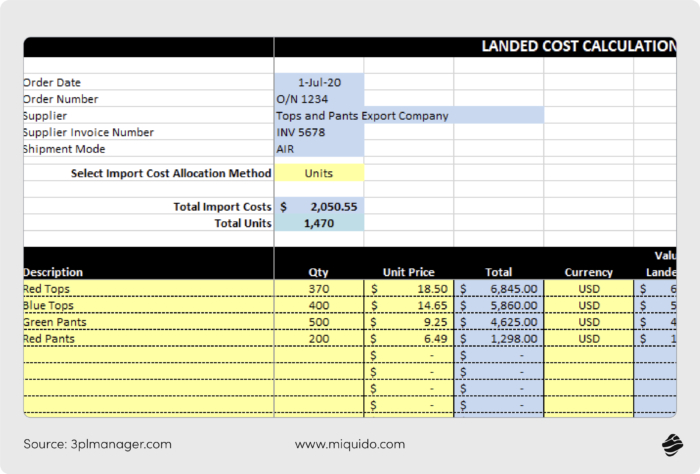
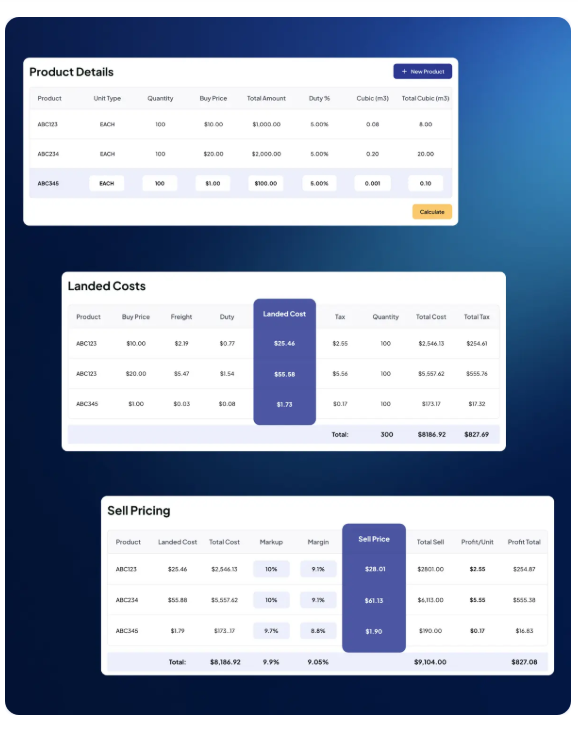
Phase 3 – Competitive differentiators
With the features implemented so far, you are already one of the industry’s benchmarks, but surely you will not stop there! The innovations below will set you light years ahead of B2B ecommerce competitors.
Product-level ESG & compliance dashboards
Channels: Direct Sales, Export, Hybrid
Regulatory pressure related to carbon emission is only enhancing in all European Union, and other regions of the world are mimicking this tendency. The requirements related to emission reporting will progressively expand to all sectors, already covering a big part of manufacturing industry.
With CSRD, Scope-3 emissions, material sourcing, and supplier compliance all under the microscope, manufacturers face a stark reality: failure to disclose can mean exclusion from the biggest contracts. It’s no longer enough to rely on existing systems that handle only invoices and shipments—today, buyers want personalized catalogs that clearly display the CO₂ footprint of every SKU, material origin, and recyclability data.
Imagine losing a major automotive OEM deal not because of product quality, but because you couldn’t prove ESG compliance. Many ecommerce platforms have started integrating ESG dashboards, and tools like Watershed show how real-time reporting is already transforming procurement. For manufacturing ecommerce, this isn’t just a matter of audits. ESG features also future-proof demand generation, trust, and secure a seat at the table in a heavily regulated future.
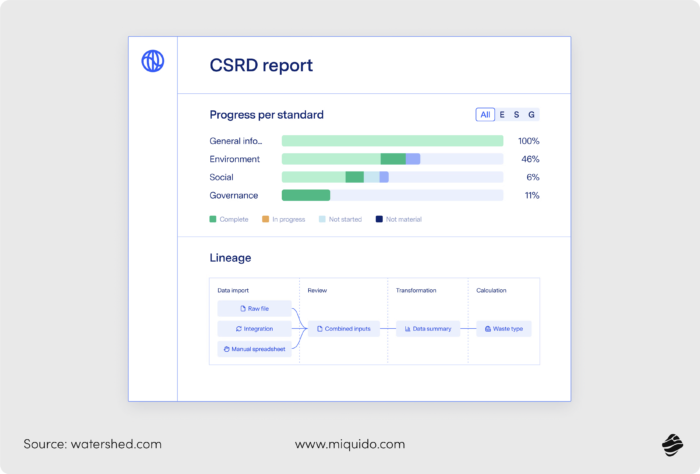
Proactive order tracking & risk alerts
Channels: Export, Hybrid, Direct Sales
The biggest headache for clients? Uncertainty. When shipments vanish into a black hole of logistics updates, delays cascade into halted production lines and reputational harm. Research shows that foreign delivery delays have already caused a ~2.6% drop in output and a 0.4% increase in prices between 2018 and 2024.
Can your buyers really afford that kind of hit when margins are already razor-thin? Automating order processing with proactive alerts and substitution options transforms frustration into confidence, because customers know they’ll be informed before a problem becomes a disaster. Instead of apologizing for delays, you can offer solutions that reinforce loyalty and keep digital sales flowing.
Omnichannel sales & support integration
Fragmentation is another untapped challenge that traditional sales methods fail to resolve. Clients expect consistent catalogs, seamless support, and data that travels with them—whether they’re browsing ecommerce platforms, talking to a sales rep, or integrating via EDI.
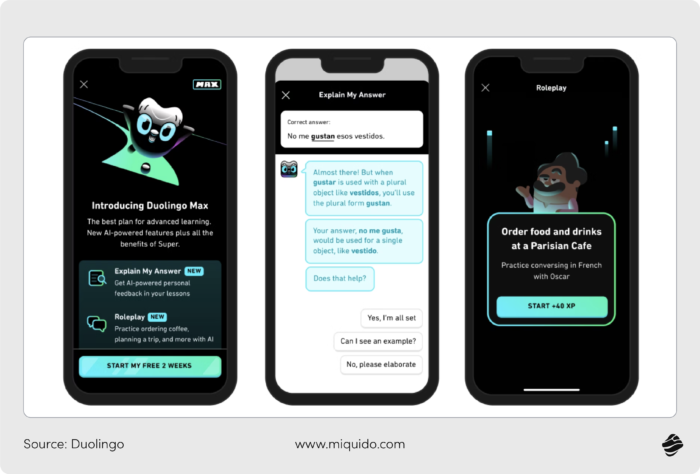
Yet too often, information lives in silos, creating friction in what should be a unified experience. How long can manufacturers rely on traditional sales playbooks when buyers demand the same fluidity they get in consumer apps? Just as Duolingo’s AI assistant quietly steps in to guide learners, your support stack could bridge digital and human interactions, resolving complex order or invoice questions without making clients repeat themselves.
For manufacturing ecommerce, integrating support across web, mobile, and direct sales channels doesn’t just improve customer experience. It is the backbone of customer retention. Omnichannel online experience can do wonders, helping you meet customer halfway, as they run through their daily agenda with no time to waste.
Procurement analytics (Client view)
Channels: Direct-to-Contract, Government, OEM
Buyers are under intense pressure to justify spend, cut waste, and benchmark against peers. Without transparency, procurement teams struggle to defend costs, and trust erodes. Considering that, manufacturing ecommerce can no longer be about just moving product. It must provide buyers with dashboards that break down spend by supplier, category, or project.
Imagine being the vendor who not only delivers components, but also gives clients the analytics they need to look brilliant in front of their CFO. More than a service, it is a growth engine for demand generation.
The blueprint already exists, and many ecommerce platforms can embed these insights directly into client portals. This level of visibility does more than making existing customers happy; it turns prospective customers into long-term partners by proving you’re invested in their success.

Hyperpersonalization across features
Imagine a mid-sized European manufacturer of façade panels, insulation systems, and modular roofing elements. Their clients are diverse: large distributors who manage warehouses across regions, architects and developers who need detailed technical data for project designs, and, more recently, individual consumers purchasing small quantities directly for renovation projects.
To support such varied stakeholders, the company rolled out a new B2B ecommerce platform. But instead of creating one-size-fits-all ecommerce sites, they embraced hyperpersonalization.
The experience begins at login. A distributor sees a dashboard that surfaces automated reordering suggestions based on past buying cycles, local stock levels, and seasonality trends. The system even adjusts promotions dynamically—if construction activity is peaking in a distributor’s region, bulk-order discounts for high-demand insulation rolls appear at the top of their screen.
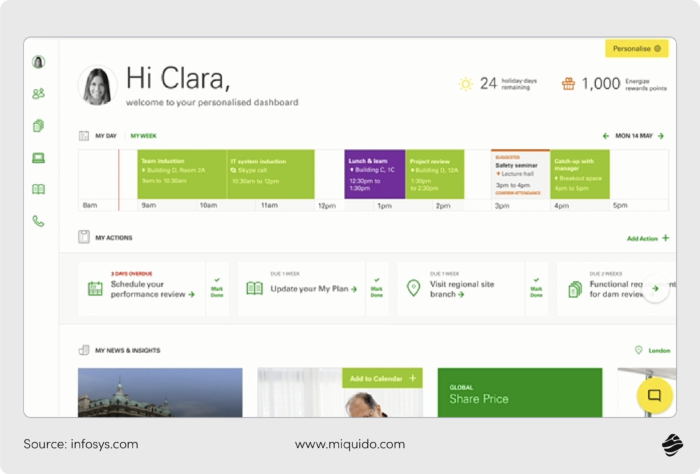
By contrast, an architect accessing the platform is immediately shown digital product catalogs with AI-driven configurators. For them, the homepage doesn’t prioritize reorders but rather interactive BIM files, compliance certificates, and advanced search capabilities tailored to specific building codes. Developers receive budget calculators and project timelines integrated directly into their personalized catalogs, while individual consumers (through the direct-to-consumer storefront) see inspiration galleries, small-lot pricing, and educational resources such as “how-to” guides for installing modular roofing kits.
What makes this system truly hyperpersonalized is how it reshuffles itself in real time. For instance, if a distributor frequently searches for fire-resistant materials, the AI learns to surface those SKUs higher in the catalog, together with related certificates. Even the layout itself changes—developers under tight deadlines get quick-access widgets for contract management and demand forecasting, while consumers see automating order processing features like “Buy Again” buttons. The system continuously adapts by pulling signals from order history, search input, interaction with technical documents, pricing negotiations, and ongoing projects.
The result? A living interface that mirrors the complexity of the construction ecosystem. Instead of juggling multiple portals or drowning in irrelevant product offerings, every user feels like the ecommerce platform was designed just for them. And beyond convenience, this translates directly into revenue.
Company-side optimization (Internal efficiency)
Client-side optimization is essential, but the internal one matters equally. Well conducted, it can impact the customer experience positively while securing your company’s finances and market results.
Phase 1 – Quick wins
Start with the classics – solutions that go beyond paper, excel sheets and emails, closing the data cycle so that you don’t miss a single unit of it.
Distributor Management System (DMS)
Handling distributors manually is a slow-moving storm: orders lost in email threads, stock allocation based on guesswork, and performance reviews lagging months behind reality. The consequence? Bottlenecks, stockouts, and missed growth opportunities across global markets.
Isn’t it absurd that in 2025, distributors who are supposed to amplify your reach still slow you down because you’re stuck in manual processes? A simple manufacturer ecommerce integration can save you this worry.
A DMS automates reorders, ensures stock flows to the right regions, and benchmarks distributor performance. For manufacturers serious about scaling product offerings across borders, it’s not just a tool, it’s a prerequisite for unlocking business opportunities that manual oversight keeps out of reach.
EDI (Electronic Data Interchange)
Paper-based processes remain the silent killer of efficiency in manufacturing ecommerce. Purchase orders, invoices, and logistics still moving on paper or email attachments create delays, errors, and compliance risks.
These frictions make even strong product offerings harder to trust for b2b buyers —because fulfillment slows down and forecasting becomes guesswork. Ask yourself: how many hours of sales potential are lost to clerks typing data into disconnected systems when EDI could have automated it?
By removing paperwork entirely, EDI ties retail partnerships and OEM operations into one seamless digital fabric. Rather than simply enhancing speed, it strengthens credibility, showing buyers that your brand is committed to digital transformation instead of clinging to outdated manual processes.
Phase 2 – Strengthening value
The solutions listed below help you ensure that you never miss a sales opportunity but also look closely before you leap.
Inventory & demand forecasting
Misaligned production remains one of the costliest inefficiencies in manufacturing. Overstock ties up capital, while shortages choke sales and damage customer relationships. The risk is amplified in today’s volatile environment: supply chains buckle, demand swings unpredictably, and every misstep chips away at margins. Imagine losing 5% of your annual sales not because of weak product offerings, but because the stock simply wasn’t there when buyers wanted it.
Inventory forecasting powered by a B2B ecommerce platform aligns production with demand, making sure distributors, hybrid models, and exports are supplied correctly. The real win is visibility: business opportunities aren’t lost to “out of stock” messages, and educational resources can help clients plan orders ahead with confidence.
Contract lifecycle management tools
The challenge here is silent but severe: missed renewals, expired agreements, and forgotten compliance terms. Each overlooked deadline risks revenue leakage or even legal penalties. Would you risk losing a government contract worth millions just because a renewal email was buried in someone’s inbox?
Contract lifecycle management automates these renewals, secures compliance, and makes agreements visible at scale. In manufacturing ecommerce, where customer-specific pricing and tailored agreements matter, automating contract cycles allows not only to avoid fines, but also stay relevant in markets where digital transformation defines trust.
Secure ERP integration data localization
Poor data quality alone costs firms an average of $12.9 million annually. Legacy systems and mounting data privacy regulations create a costly paradox: the larger your operations, the harder it is to move information securely across borders.
For manufacturers balancing complex product offerings and global sales, the consequences are obvious: higher costs, compliance fines, and lost business opportunities when systems don’t speak to each other. Isn’t it smarter to invest in clean, compliant integrations than to bleed millions every year because of disconnected, error-prone manual processes?
Secure ERP integration connects platforms like SAP or Oracle directly with your B2B ecommerce platform, while data localization ensures compliance with local laws.
Phase 3 – Competitive differentiators
Procurement analytics (Supplier & cost control)
Procurement today is under a magnifying glass. Buyers are under constant pressure to justify spend, reduce wastage, and align with compliance frameworks. Yet too often, the reality looks like fragmented spreadsheets, late-night manual processes, and little visibility into supplier performance. The cost of inefficiency is real—real money leaving the business, slowly eroding competitive advantage.
Dashboards that track spend by supplier, category, or project can turn this chaos into clarity. With benchmarking tools and alerts for budget overruns, procurement analytics transforms decision-making from reactive to proactive.
Imagine showing your CFO a Power BI-style view of supplier trends—suddenly, conversations shift from defending costs to identifying business opportunities. Isn’t that the kind of narrative every manufacturing ecommerce leader would rather tell?
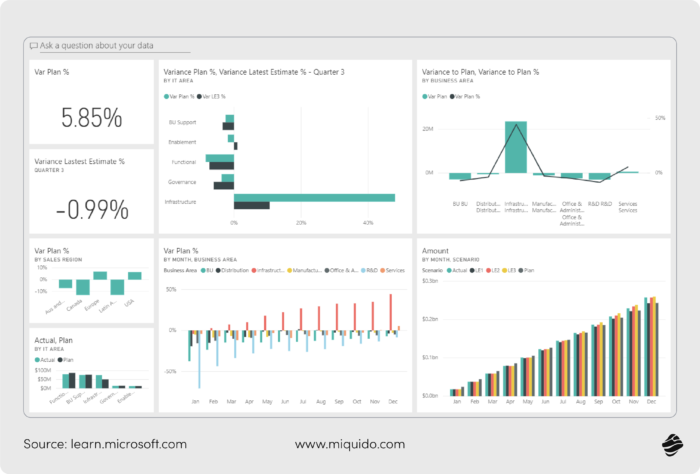
Alternative supplier alerts / Substitution
In today’s fragile supply chains, a single regional blockade or regulatory freeze can choke inventory availability overnight. For manufacturers, the risk goes beyond higher shipping fees. It’s also production stoppages, missed deadlines, and disappointed end customers. So the question is: when your main supplier goes offline, do you scramble manually, or does your ecommerce platform quietly surface qualified alternatives?
Alternative supplier alerts do exactly that. By scanning risks in specific regions, the system suggests backup suppliers or substitutes, ensuring continuity and helping you stay competitive in volatile markets. This way, the sales process is protected, and resilience is built into your ecommerce strategy, so clients experience seamless fulfillment even when global markets don’t cooperate.
Virtual trade show & lead capture tools
Trade shows remain vital for manufacturers, but here’s the problem: too many promising leads vanish into the ether once the event ends. Brochures get tossed, business cards gather dust, and sales teams lose track of who showed interest in what. In a world where every interaction should fuel demand generation, why let opportunity slip away?
A virtual trade show layer solves this by extending the reach of physical expos into digital spaces. Lead capture tools integrated with your b2b ecommerce platform ensure every handshake, scan, or click is logged, nurtured, and followed up with precision.
Predictive UX & order guidance
Complex catalogs are both a blessing and a curse for manufacturing ecommerce. They showcase the breadth of product offerings, but they often overwhelm buyers who just want to complete their orders efficiently. The risk? Confused target audiences abandon carts, delay purchase decisions, or call your customer service teams for answers that should have been automated.
Predictive UX changes the game. By analyzing customer behavior—past orders, search input, browsing paths—AI can recommend reorders, highlight compatible products, and even guide procurement managers step by step through complex configurations. It feels less like “shopping” and more like being accompanied by a trusted advisor.
For end customers and distributors alike, that’s the definition of an efficient shopping experience—and a direct path to higher customer retention.
How most manufacturers currently access these features?
Most manufacturers rely on a patchwork of off-the-shelf ERP modules, spreadsheets, email, and separate SaaS tools to manage inventory, orders, pricing, and compliance. These systems are often poorly integrated, requiring manual intervention for tasks like quoting, reordering, and risk monitoring. As a result, data is fragmented across channels, slowing performance, creating errors, and frustrating customers.
| Problem | Impact on manufacturer & customers |
|---|---|
| Information silos | Inconsistent product data across catalogs, e-commerce, and reps → customers get wrong pricing, stock info, or BOM compatibility. |
| Manual errors | Misquoted prices, incorrect landed costs, delayed shipments → frustrated customers, lost revenue. |
| Slow performance | Manual reporting, long approval chains, and disconnected tools slow order processing and responses. |
| Security issues | Multiple uncoordinated platforms increase exposure to cyberattacks and fraud. |
| Compliance & ESG risk | Hard to track certificates, sustainability data, or regulatory reporting → risk of contract rejection. |
| Inefficient payments & cash flow | Delayed invoicing, cross-border friction, and missed BNPL opportunities hurt cash flow. |
How custom software development changes this?
Imagine your company today as a factory with separate halls, where workers have to carry parts back and forth by hand. Each hall is a different system – ERP, spreadsheets, emails, SaaS tools. This slows everything down, increases the risk of mistakes, and makes it hard to grow faster than the competition.
A custom solution works like a modern production line – all modules are integrated into a single flow. Data on inventory, pricing, certificates, or payments is synchronized in real time, removing bottlenecks and human errors. This makes operations smoother, while customers always get accurate, up-to-date information.
On top of that, such a platform is like building on a solid foundation – flexible enough to expand, but secure when it comes to data and compliance. Instead of constantly patching together external systems, you create a solution tailored to your business model. In the long run, this proves more cost-effective, since you avoid paying for unnecessary licenses and costly downtime.
You may go even a step further and consolidate B2B and B2C sales within one platform. Diono, for example, took such leap, and the results were splendid:
- +114% revenue growth in under a year
- +44% increase in transactions & +48% higher AOV
Let’s check if there is a potential for similar results at your company!

![[header] b2b ecommerce for manufacturing – 21 feature ideas for cutting costs and multiplying sales](https://www.miquido.com/wp-content/uploads/2025/09/header-b2b-ecommerce-for-manufacturing-–-21-feature-ideas-for-cutting-costs-and-multiplying-sales.jpg)



![[header] b2b ecommerce for manufacturing – 21 feature ideas for cutting costs and multiplying sales](https://www.miquido.com/wp-content/uploads/2025/09/header-b2b-ecommerce-for-manufacturing-–-21-feature-ideas-for-cutting-costs-and-multiplying-sales-432x288.jpg)
![[header] mobile app ui design tips for multiplying sales optimize your mobile commerce app](https://www.miquido.com/wp-content/uploads/2025/09/header-mobile-app-ui-design-tips-for-multiplying-sales_-optimize-your-mobile-commerce-app-432x288.jpg)
![[header] top ai use cases in ecommerce b2b from manufacturing to foodtech](https://www.miquido.com/wp-content/uploads/2025/09/header-top-ai-use-cases-in-ecommerce-b2b_-from-manufacturing-to-foodtech-432x288.jpg)